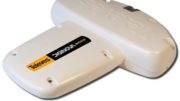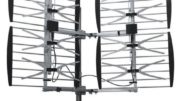The year: 2013.
The idea: A company called Aereo found a way to exploit a loophole in the FCC’s key set of laws and rules to try to create a subscription TV service without paying broadcasters for the content. The rules said you couldn’t distribute TV using a single antenna and charge for it. So, Aereo came up with technology that used hundreds of tiny little antennas instead. This allowed them, according to the rules, to charge for local channels without paying broadcasters.
There’s really just one problem with that.
Broadcasters want to get paid. More than that, they deserve to get paid. Creating TV shows and blasting them out into the world costs money. According to the broad interpretation of FCC rules, broadcasters have a choice. They can give their signal away for free and demand it be carried, or they can charge for the signal and choose to withhold it if they want. It’s up to them. No one intended that slight-of-hand and a loosely-written rule could be exploited to let a “middleman” charge for TV without the permission of the people who broadcast it.
Aereo may have had a good idea, but the real issue here was that everyone knew that at the heart of it was a trick, and what they were doing wasn’t right. It was so wrong in fact that it threatened the entire fabric of our copyright system. And our government was content to sit back and let it happen.
It was such a simple idea
Aereo’s idea was simple — the rules said that you only had a subscription TV service if you used one antenna to distribute to many people. And if you weren’t a subscription TV service, you didn’t have to pay broadcasters. So they created tiny little antennas, one for every user, and put them within feet of the broadcast towers. One antenna, one person, so no payments to broadcasters.
Except obviously that was stupid, because obviously what Aereo was doing was acting just like a pay-TV service. The FCC sat back and did nothing. Nothing. All they would have had to do was make a rule change that says if you charged for the service you needed to pay broadcasters, no matter how many antennas you had. And they didn’t do that.
Instead, they let the courts duke it out, and in November 2013, I reported that the case was going to the Supreme Court. How stupid! A simple rule change would have done it but instead the FCC just punted.
Here’s what eventually happened: The Supreme Court finally got around to hearing the thing two months later, and said, essentially, DUHHHH, of course you can’t do that. Shortly after, the company known as Aereo slunk back into the corner and died of starvation.
The evolution of the issue
Aereo was never heard from again after that whole debacle. But, there was another company on the rise trying to do much the same thing. Several years later, another company tried to figure out a way to get local channels to people. It was called Locast, and I covered them extensively on this blog. Locast’s idea was simple: Don’t charge, therefore you can’t say you’re profiting from someone else’s work. That’s right, Locast was free. And it worked pretty darn well. If broadcasters had embraced it, it would probably still be here today. But instead, broadcasters hit on precisely how Locast could do what it did without charging. They accepted a lot of “voluntary donations.” Big companies with an interest in squeezing broadcasters “donated,” and so did a lot of other people. The courts said yes, Locast was actually profiting, and they went away too.
Why the courts? Because again the FCC failed to act. I don’t know about you but keeping in mind the FCC is part of the Executive Branch… when they were too lazy to even change one simple rule using common sense, that’s when I lost hope for the Executive Branch as a whole.





